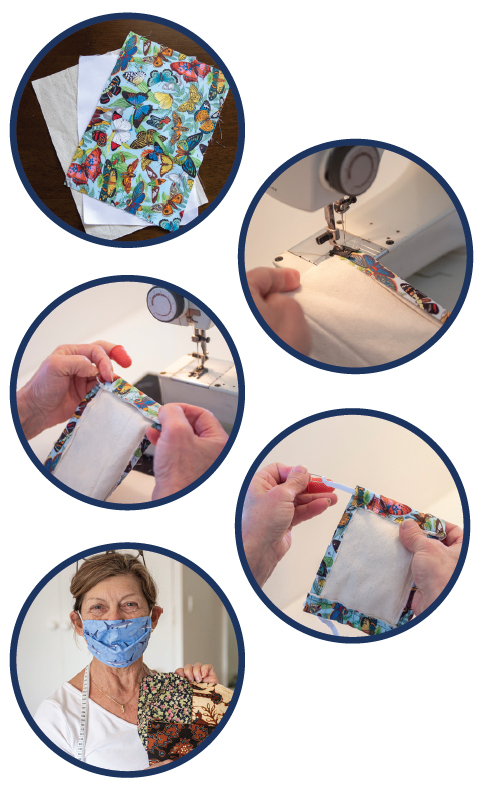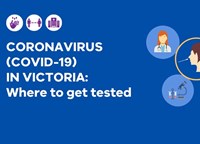07 June 2021
COVID-19 vaccination information

All Australians 40 and over are eligible for the COVID-19 vaccination, among other groups.
Enter text and select option from the drop-down list

Published on 21 July 2020
To help slow the spread of COVID-19, the Victorian Government has made it mandatory for people living in metropolitan Melbourne and Mitchell Shire to wear face coverings when they are leaving the house.
Studies have recently shown that, even when factoring in imperfections and human error, wearing face masks can reduce transmission of COVID-19 by around 60 per cent.
Face masks provide an added layer of protection but the best ways to reduce the transmission of coronavirus remain the same — good hand hygiene, cough and sneeze etiquette and keeping a physical distance of 1.5 metres. If you have COVID-19 symptoms, get tested.
In accordance with the Victorian Government, we recommend a cloth mask made of three layers — a mix of breathable fabrics to ensure adequate protection. Cloth masks are reusable, simple to make and easy to use.
For instructions on how to make your own cloth mask, please see below. These instructions align with the Department of Health and Human Services’ advice.
Please note: if you are using surgical face masks, please make sure you dispose of these responsibly in the rubbish bin.
A mask should fit securely around the face, specifically covering your nose and mouth areas. The face mask should be secured by ties at the back of your head, or by ear loops. Make sure your mask does not have holes or a valve. This can result in breathing out the virus if you have COVID-19.
| Section | Quantity | Material type | Example materials |
| Outer layer | one piece (25cm x 25cm) | Water resistant fabric (polyester/pokpropylene) | - Clothing - Reusable shopping bags - Exercise clothing |
| Middle layer | one piece (25cm x 25cm) | Fabric Blends (cotton/polyester blend/polypropylene) | - Clothing - Reusable shopping bags |
| Inner layer | one piece (25cm x 25cm) | Water-absorbing fabric (cotton) | - Clothing |
| Ear loops | two pieces (20cm each) | Elastic or string or cloth strips | - T-shirt - Shoelaces |

Before putting the mask on and taking it off, wash your hands for at least 20 seconds with soap and water, or use hand sanitiser that’s made up of more than 60 per cent alcohol. Avoid touching your eyes, nose and mouth at all times. Store cloth face masks in a plastic bag. Your cloth face mask should be washed after each day of use.
Masks are not the only way to stay COVID-Safe. Wherever you can, keep 1.5 metres physical distance, wash your hands often and cough or sneeze into a tissue or your elbow. If you have COVID-19 symptoms, get tested.
For more information visit the Department of Health and Human Services’ website.
07 June 2021

All Australians 40 and over are eligible for the COVID-19 vaccination, among other groups.
18 August 2021

As you know, a number of mystery cases have been identified in St Kilda and surrounds, and there continues to be a high risk of unidentified transmission.
© 2026 Glen Eira City Council